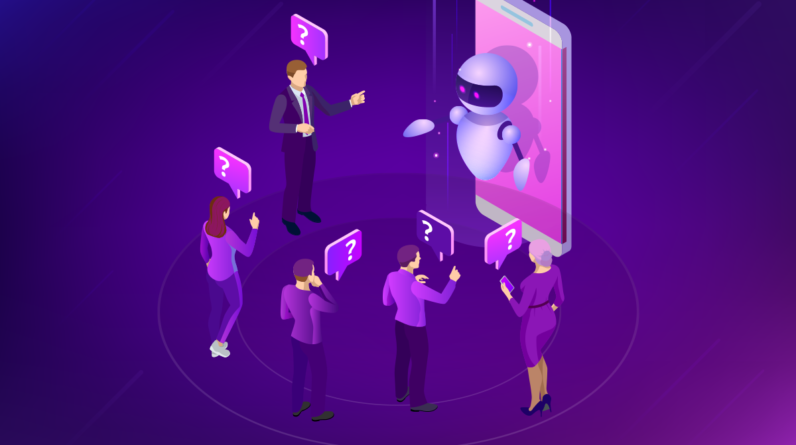
In the digital era, Artificial Intelligence (AI)-powered chatbots have increasingly taken on a central role in shaping our access to information. The debate over whether these tools are vehicles for fake news or bulwarks against their dissemination has been a subject of extensive discussion and research.
The role of AI in modern information dissemination
Artificial Intelligence, particularly in the form of advanced chatbots like ChatGPT, Gemini, and Copilot, has revolutionized the way we access and interact with information. These sophisticated systems are designed to understand and generate human-like text, making them useful for a wide range of applications, from customer service to educational tools.
Understanding chatbots
Chatbots are AI-driven programs that simulate human conversation through text or voice interactions. They use natural language processing (NLP) to understand and respond to human input, often providing immediate answers to queries. The capabilities of chatbots have expanded significantly in recent years, thanks to advancements in machine learning and AI technologies.
Chatbots as defenders against fake news
Recent research from the Massachusetts Institute of Technology (MIT) suggests that modern chatbots can effectively combat fake news. According to the study, advanced chatbots like GPT-4 Turbo can refute erroneous beliefs and reduce adherence to conspiracy theories among users.
Study insights
The MIT study involved 2,190 participants who were inclined to believe in conspiracy theories. After a brief interaction with the GPT-4 Turbo language model, about 20% of participants changed their views, acknowledging the inaccuracies in the theories they previously supported. This finding indicates that chatbots can be powerful tools in promoting critical thinking and combating misinformation.
The mechanism behind chatbot efficacy
The success of chatbots in fighting fake news can be attributed to several key factors:
Accurate information retrieval
Modern chatbots are equipped with advanced algorithms that enable them to retrieve and present accurate information from vast data sources. These systems can cross-reference data, verify facts, and provide users with reliable information.
Promoting critical thinking
By engaging users in thoughtful dialogue, chatbots can challenge misconceptions and encourage individuals to reconsider their beliefs. This process helps foster a more informed and critical approach to consuming information.
Emotional neutrality
Unlike human interactions, chatbots provide information without emotional bias. This neutrality can be particularly effective in contentious discussions, as it allows users to focus on the facts rather than getting caught up in emotional arguments.
The challenges and risks
Despite their potential, chatbots are not without their challenges. One of the primary concerns is the risk of spreading misinformation, especially during their initial stages of development.
Learning from misinformation
Chatbots learn from vast datasets that include a wide range of information, including false or misleading content. Early fears suggested that these algorithms could inadvertently propagate fake news by mimicking the inaccuracies found in their training data.
Continuous improvement
However, as technology evolves, chatbots have become more adept at discerning and presenting accurate information. Ongoing improvements in AI and machine learning are enhancing the ability of chatbots to filter out false information and provide users with reliable data.
The evolution of chatbots in combating fake news
The journey of chatbots from potential spreaders of misinformation to reliable defenders against fake news has been marked by significant technological advancements and rigorous research efforts.
Initial concerns
When chatbots first emerged, there was legitimate concern about their potential to disseminate false information. Early models lacked the sophistication to effectively differentiate between credible and non-credible sources, leading to instances where chatbots would unintentionally share misleading content.
Technological advancements
With the advent of more advanced AI and machine learning techniques, the capabilities of chatbots have improved dramatically. Modern chatbots are now better equipped to evaluate the credibility of information, cross-check facts, and provide users with accurate and reliable responses.
Research and development
Ongoing research, such as the MIT study, continues to refine our understanding of how chatbots can be used to combat misinformation. These studies are crucial in developing strategies to enhance the effectiveness of chatbots in promoting accurate information and reducing the spread of fake news.
The future of chatbots in information dissemination
Looking ahead, the role of chatbots in the dissemination of information is likely to become even more significant. As AI technology continues to evolve, we can expect chatbots to play an increasingly central role in shaping our information landscape.
Enhanced capabilities
Future chatbots will likely have even more advanced capabilities, enabling them to provide more accurate, relevant, and timely information. Improvements in natural language processing, machine learning, and data analysis will further enhance the ability of chatbots to combat misinformation.
Integration with other technologies
The integration of chatbots with other emerging technologies, such as augmented reality (AR) and virtual reality (VR), could create new opportunities for interactive and immersive information experiences. These advancements could further enhance the ability of chatbots to engage users and promote accurate information.
Expanding applications
As chatbots become more sophisticated, their applications are likely to expand beyond traditional roles. In addition to customer service and educational tools, chatbots could be used in areas such as healthcare, legal advice, and financial services, where accurate information is critical.
Read also: OpenAI’s latest developments: shaping the future of artificial intelligence


![THESE BITCOIN WHALES JUST FOOLED EVERYONE! [Exact strategy....]](https://www.cryptocurrents.net/wp-content/uploads/2024/08/these-bitcoin-whales-just-fooled-everyone-exact-strategy-WhgubJxMmeA-796x445.jpg)

![WARNING: EVERY BITCOIN BEAR WILL BE LEFT CRYING [Huge chart.....]](https://www.cryptocurrents.net/wp-content/uploads/2024/08/warning-every-bitcoin-bear-will-be-left-crying-huge-chart-jgadWvvgEJw-796x445.jpg)

